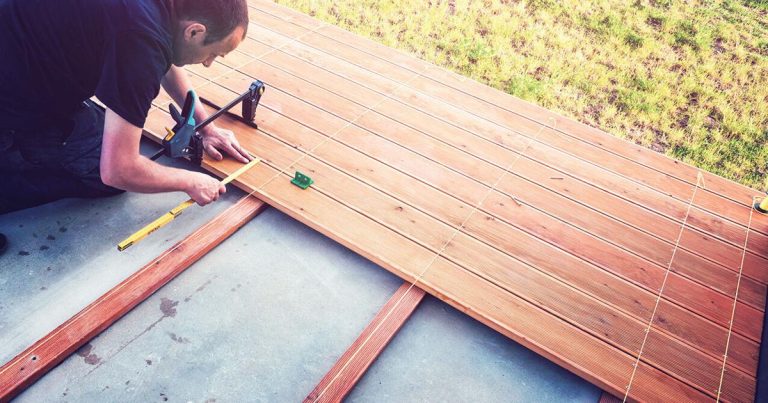Beauty is in the eye of the beholder, and that concept applies just as much when renovating a home as it does when studying a work of art. So when homeowners are looking for the best building materials for home renovations that include a backyard deck, their own personal preferences may ultimately determine the direction.
Deck boards and railings can be made from a variety of materials, including traditional hardwood, plastic, and composite materials.
Here are some of the more popular decking materials to help homeowners make an informed decision when contracting with a decking professional.
woodIn the not-too-distant past, decks were primarily constructed using some type of wood. Wood is widely available and fairly cost-effective. However, as anyone who owns a wood deck knows, wood requires frequent maintenance and can be susceptible to rot and insect damage. Wooden decks can also crack and deteriorate if exposed to the elements or pool water. Pressure-treated boards are infused with chemicals to make them more durable, but that doesn't mean they won't wear out.
Still, the traditional look of a wood deck is still appealing to many homeowners.
Composite decking is made from a mixture of recycled plastic and wood fibers. Because they contain so much recycled content, composite decking is appealing to those concerned about the environment and sustainability. Composite decks come in uncapped and capped varieties. The capped version comes with an additional layer of a protective cap made from a high-performance polymer, according to Timbertech, which provides decking and outdoor furniture.
Composite decking has a similar initial cost as wood, but requires less maintenance over the years, although it does need to be scrubbed to avoid mold growth.
Decks made of polyvinyl chloride, polypropylene, or high-density polyethylene or HDPE are collectively referred to as PVC decking. They are made only from environmentally safe plastic and do not contain any wood. PVC decking is more durable than composite materials and can last a lifetime. PVC decking only requires occasional cleaning. A potential downside to PVC is that it doesn't necessarily look, sound, or feel like wood. Also, the complex fixing system allows the board to move in response to changes in temperature, which can result in squeaks when walking on the deck. Although PVC is generally more expensive than wood or composite, the investment may be worth it for those who don't want to worry about repairing or replacing their deck.
This old house also has plastic decking made from polystyrene. It's hard, strong, and light, and the Eon brand doesn't slip easily when wet, so it might be good for around the pool.
Aluminum may not be as popular as other decking materials, but it is lighter and stronger than wood, composites, and plastic. Aluminum is also mold, weather and insect resistant and can be recycled.
Aluminum decking is one of the more expensive decking materials because it lasts for many years.
Homeowners have many options when choosing decking materials. If you're looking for a traditional look and a moderate cost, wood may be your best choice. Those who value appearance and durability may prefer composite. If you value durability and want to use it for a long time, you should strongly consider plastic or aluminum materials.


